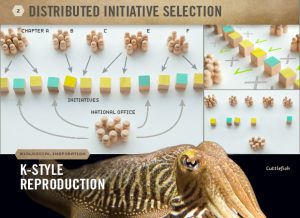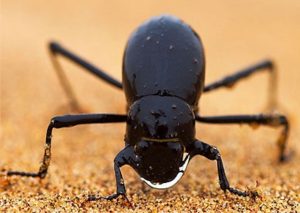One of the things that I noticed we all seemed to struggle with as a class is how we grapple with the idea of creating things that are just going to be thrown out into a landfill. Even though we all want to make things that are more efficient, produce less waste and have a lower environmental impact, consumers are always looking for something new. I think that we all agreed that we need to shift our focus towards creating goods that are multi-use, have a longer life cycle and are even regenerative. In my mind, the best way to start this transition is to approach things from a design perspective. As Thomas Watson Jr. eloquently put it, “good design is good business”.
In one of my other classes – Environmental Design 231: Thinking by Design – we look at a lot of examples of putting ourselves in a mindset that allows us to design better products. One of the company’s that often gets pointed out is IDEO. This cutting edge design firm is constantly challenging themselves to think of creative product designs that aren’t only easier to use but provide customers with viable solutions to problems they didn’t realize they had. By directly targeting one of the core C’s of marketing and focusing on Customer Wants and Needs IDEO has made a name for itself designing products that are intuitive and that people want to use over and over again.

One thing that they described was looking to Nature as a source of inspiration. Over the span of millions of years, a countless number of species have all adapted and evolved to do one thing: survive. Highly tuned to become the most efficient organisms in their surroundings nature has created some of the most remarkable case studies that we can learn from. The concept of biomimicry that these designers use is exactly that. It involves looking at something in nature to inspire an idea and then applying it in a design to make something more useful or efficient. Michael Pawlyn hosted a TED talk about biomimicry and went into detail describing how nature has specifically influenced architecture.

One of the examples that stuck out to me the most was how architects looked at the Namibia Beetles in a desert environment where they were trying to combat desertification. They realized that this one beetle was able to thrive in a blistering area where there was essentially no water by becoming cooler than its surrounding and causing condensation all because of matte black colour. The tiny hydrophilic bumps and grooves on its skin would then help to funnel the water down to its mouth. Just by standing in place and st
retching out its wings, this beetle was able to create its own water out of thin air. The architects then designed a greenhouse that uses sea water to cool down the surrounding temperature (allowing for plants to grow more easily) and also filters the sea water into freshwater. This created a regenerative cluster that quickly created a lush green area surrounding the greenhouse in a previously barren desert.
As an environmental scientist, this particular topic resonated with me on a deeper level. Combining insights into nature with the design process is an inspiring idea for me that I believe will drive us to create better and more sustainable products.